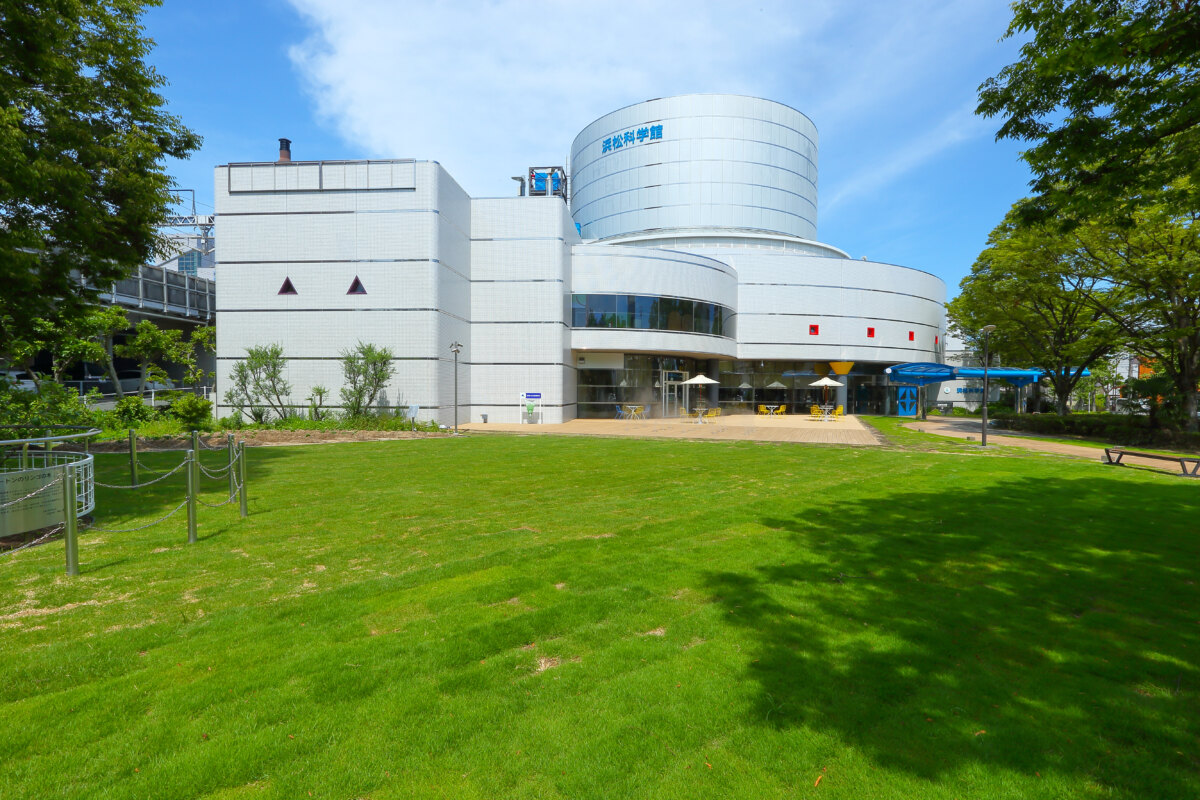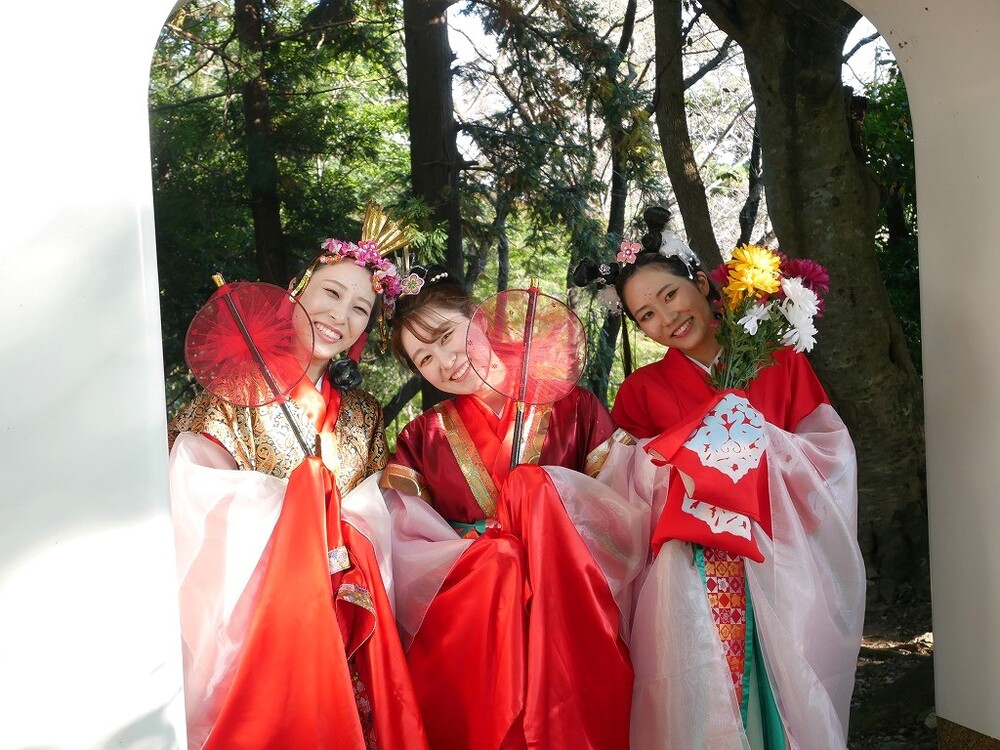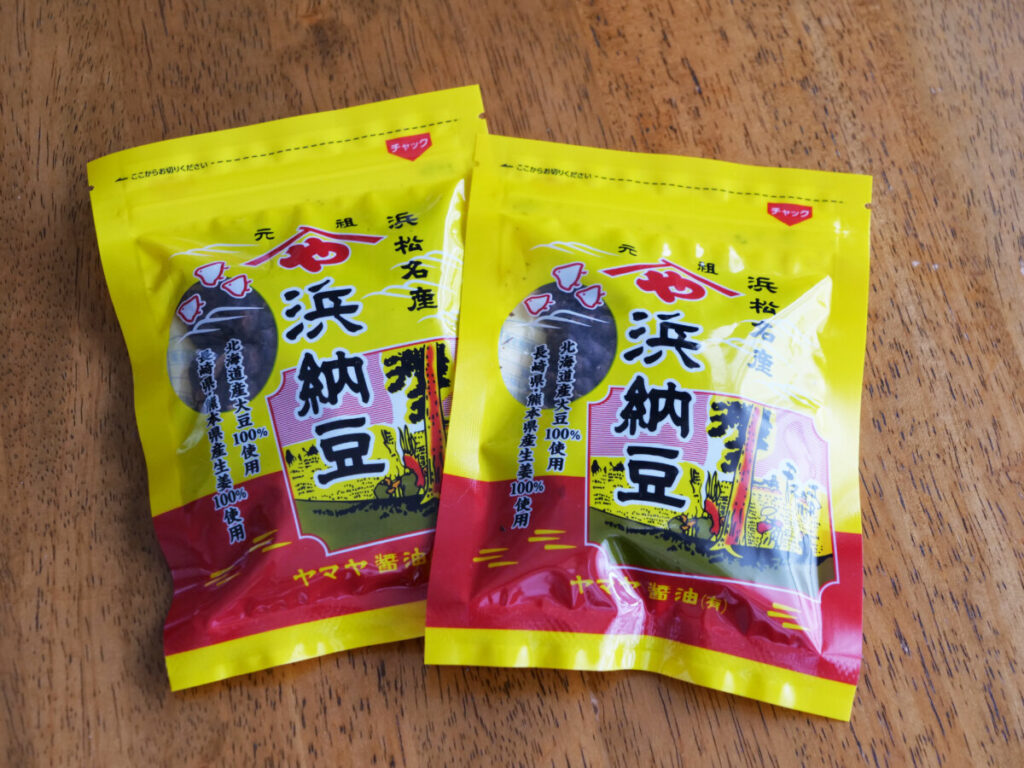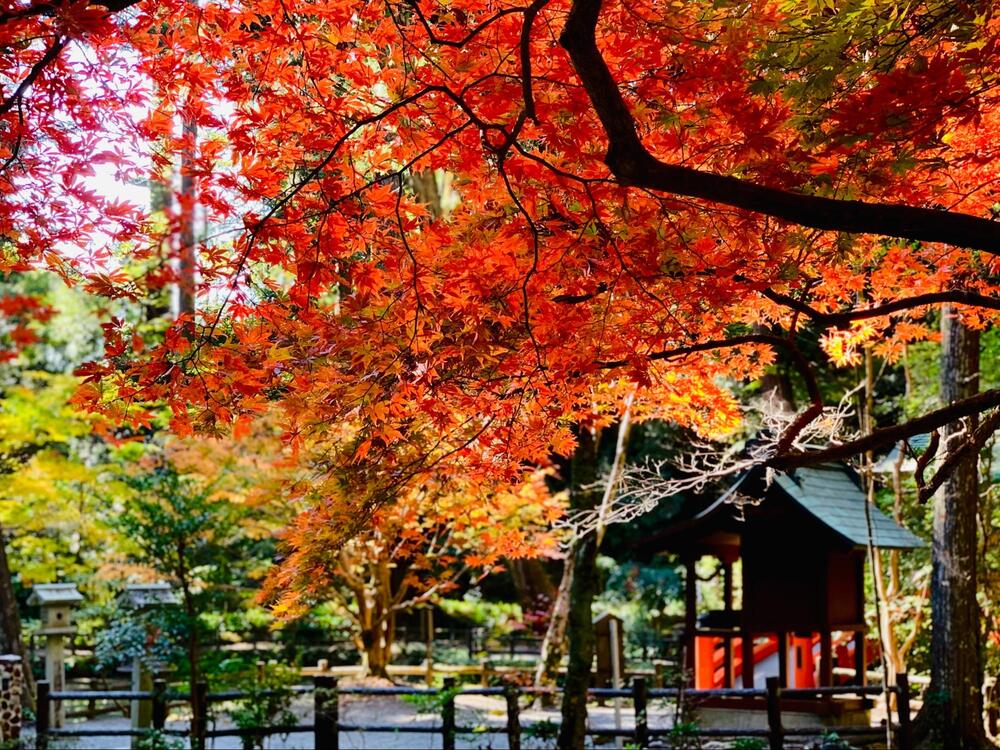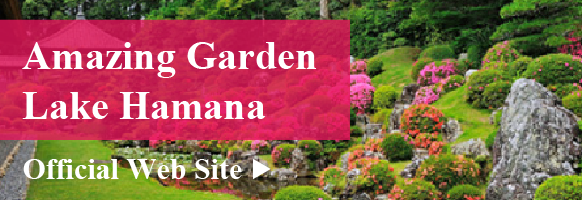Get to Know Hamamatsu
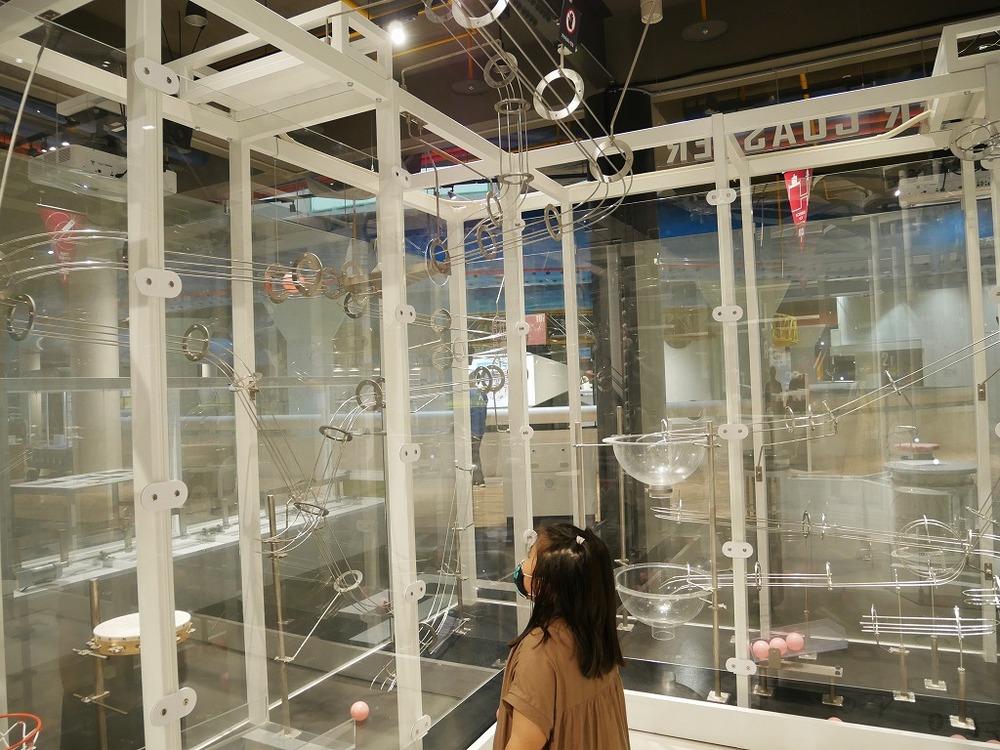
- Enjoy
Rain or Shine, Hamamatsu Science Museum Is a Fun, Hands-On Spot Near the Station
Looking for a place close to Hamamatsu Station where you can have plenty of fun even on a rainy day? Hamamatsu Science Museum offers just that…
Have you ever been looking for a spot close to Hamamatsu Station where you can have fun even on rainy days?
Hamamatsu Science Museum makes both of these possible. The museum is divided into zones of nature, force, sound, light, and space, where you can enjoy learning about science while having a variety of experiences.
Furthermore, in the planetarium, which was renovated in March 2022, you can view approximately 100 million stars. Science shows are also popular.
Hamamatsu Science Museum, a popular spot near the station
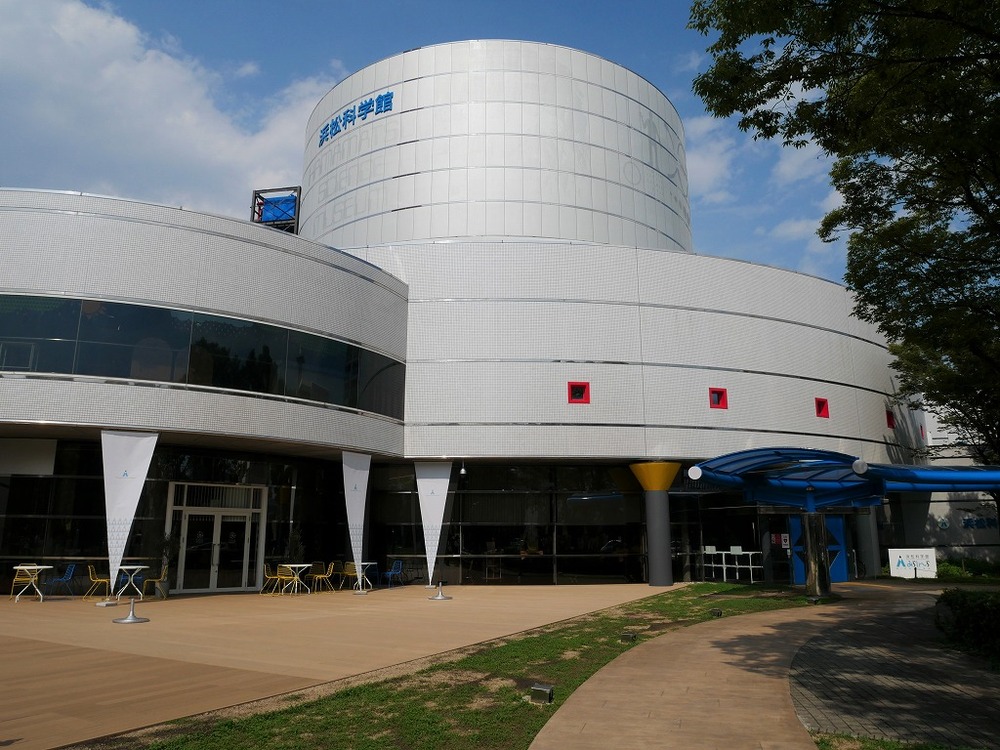
About 7 minutes walk east from JR Hamamatsu Station. Hamamatsu Science Museum, with its curved, whitish exterior, is a popular spot that can be enjoyed not only by children but also by adults.
The 1st and 2nd floors of the museum are divided into 5 zones: Nature, Power, Sound, Light, and Space.
Many of the exhibit items in each zone can be experienced by multiple people at the same time, allowing people of all ages to communicate.
A science show is held on the M2F (middle school 2F), and it is said that you can have plenty of fun not only on sunny days but also on rainy days.
As for the admission fee for the permanent exhibition, it’s free for junior high school students and under! (Additional charges apply for special exhibitions held several times a year)
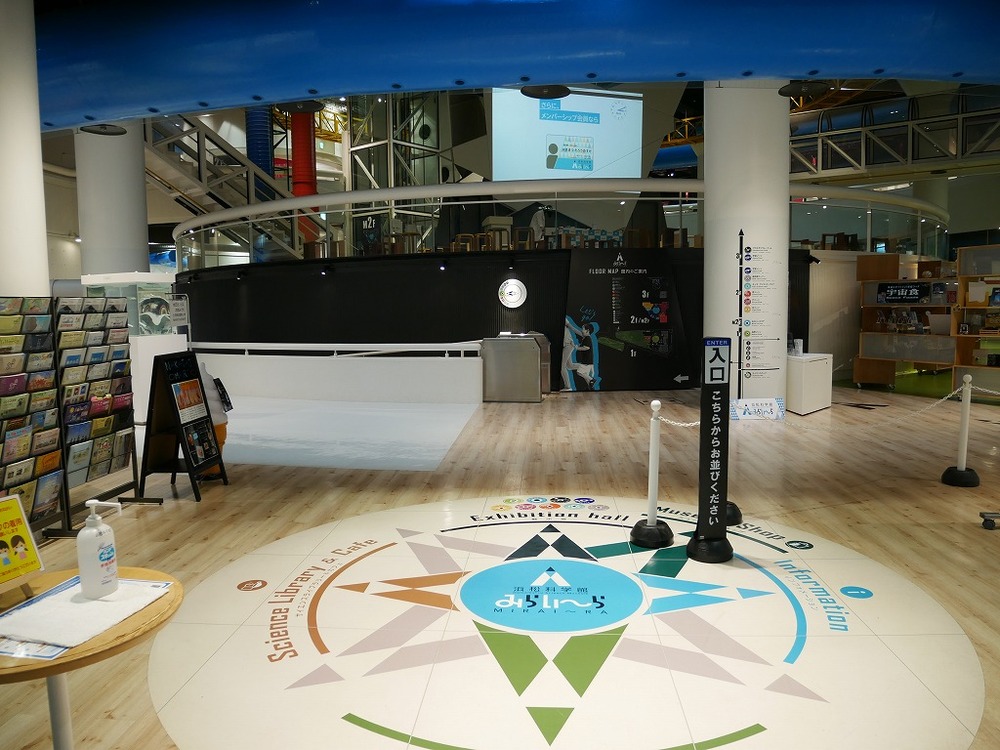
The photo above is the view from the front entrance.
If you are going to the permanent exhibition hall, go to the front right, and if you are going to the museum shop, go diagonally to the back right. If you are using the library and cafe, please turn to the left.
The museum shop, library and cafe are free of charge (eating and drinking at the cafe is an additional charge).
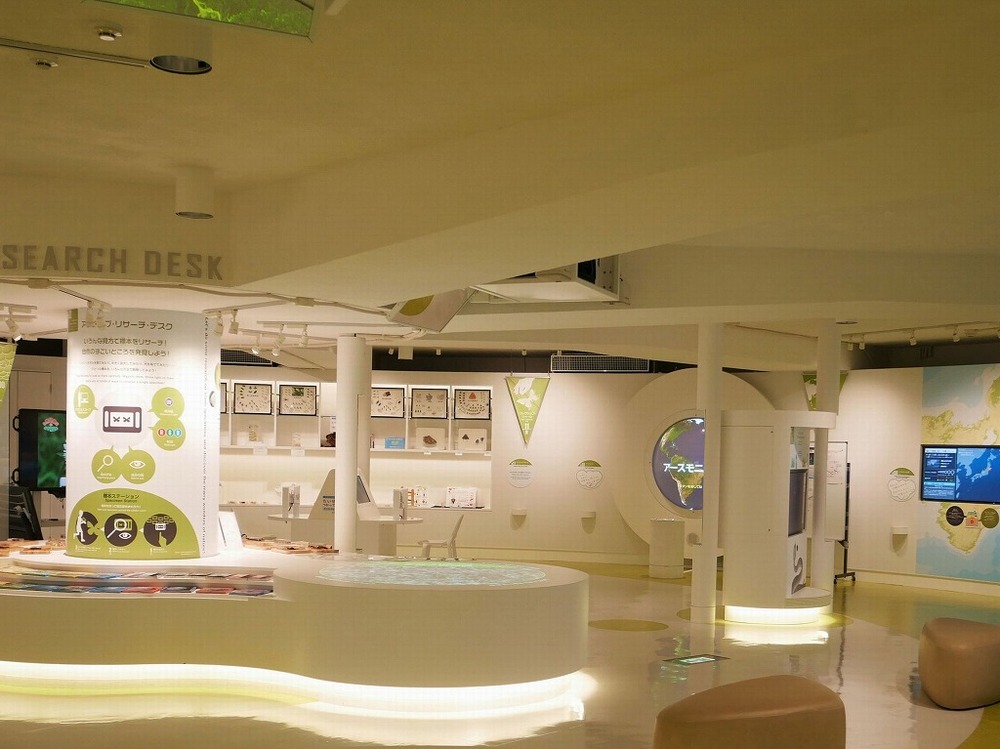
Let’s start with the “Nature Zone” located in the center of the 1st floor of the building.
Here you can see Hamamatsu’s ecosystem using wall panels and observe living specimens in a variety of ways.
In a world captured by sensors, we can see how invisible infrared rays (heat) are detected. Check which parts of your face and hands are hot.
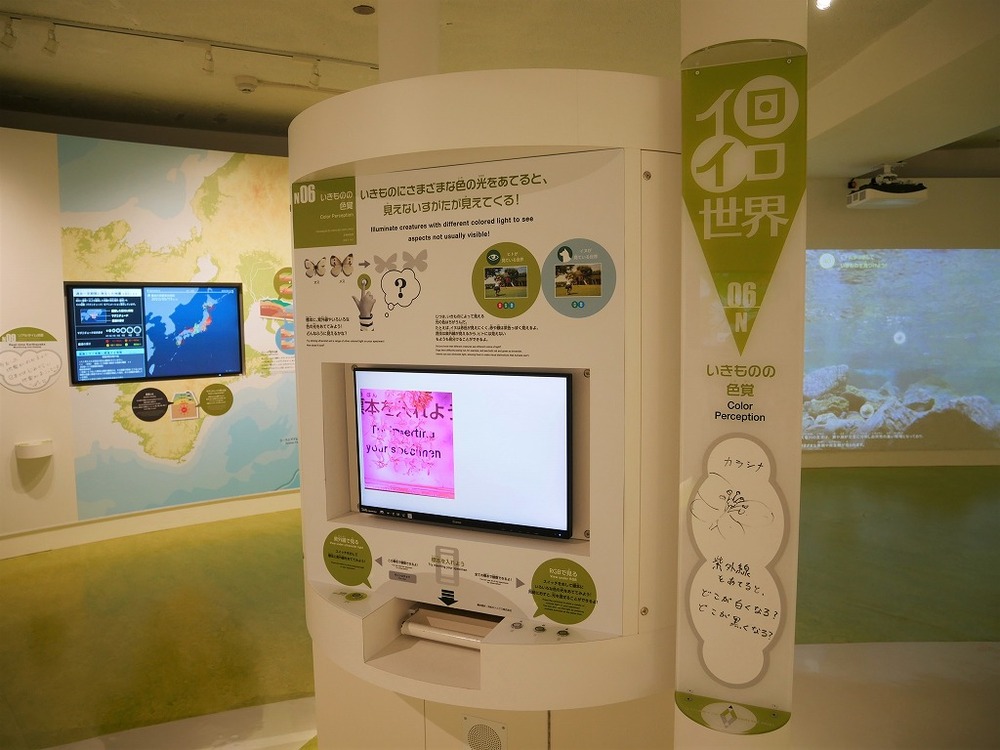
What do you think the mustard seed specimen I put in will look when you press the UV button?
With the color vision of living things, we can learn how animals and insects see the world.
You can freely observe the specimens lined up at the specimen station located in the center of the nature zone using a digital scope or the color vision of creatures. View with multiple people at once, or zoom in on areas of interest. You might discover something by observing! ?
Let's play simulation! "Power Zone" and "Sound Zone"
The second floor is divided into power, sound, space, and light zones, and a new technology corner.

In the “Chikara Zone”, you can enjoy simulations with the cooperation and sponsorship of local companies, so it is very popular with people of all ages!
Among the most popular are the Active Power Coaster (pictured above), Power Assist Connection, and Car Basics and Applications.
At the Active Power Coaster, you can observe the force generated by the rolling ball.
The transparent acrylic panel surrounding the outside shows the effects of force, such as the trajectory of the ball and the speed of its movement. First, try rolling the ball!
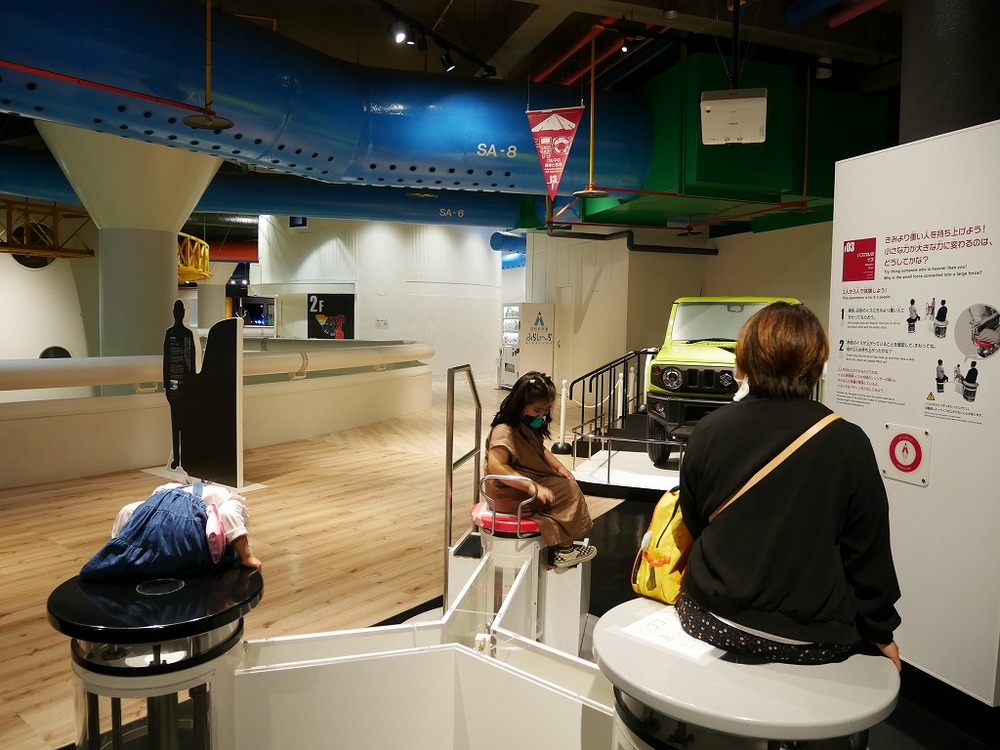
From the three chairs, large, medium and small, you can experience Pascal’s principle, which transforms a small force into a large force. Pascal is the international unit of pressure and stress. Hectopascal (1hPa = 100Pa), which represents the central pressure of a typhoon, is famous.
By the way, the recommended exhibit by the Hamamatsu Science Museum staff is various kinds of power generation. Which of the three types of power generation methods (wind, solar, and vibration) is easiest to generate electricity?
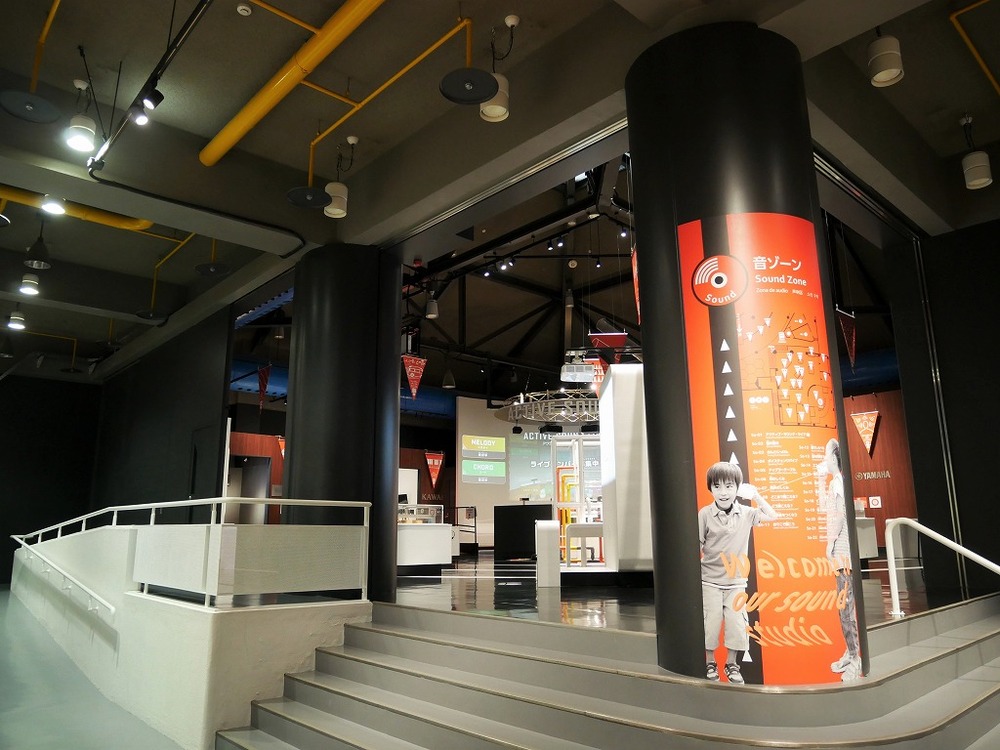
The “Sound Zone” is filled with exhibits unique to Hamamatsu, the city of musical instruments! Hamamatsu is the birthplace of major musical instrument manufacturers such as Yamaha, Kawai Musical Instruments, and Roland.
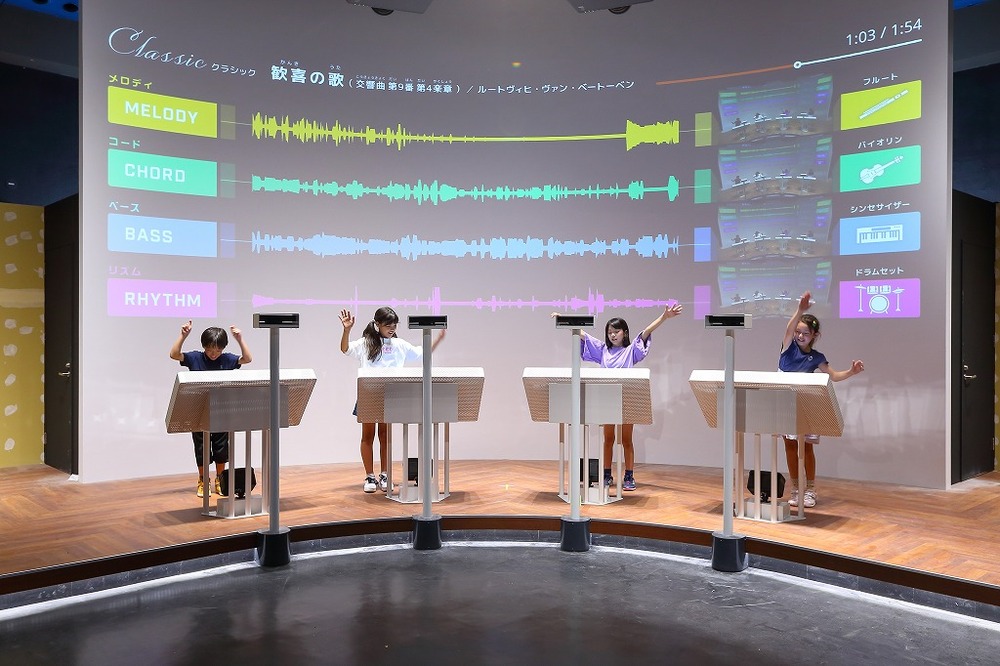
What the four boys and girls are enjoying is active sound live. Each member is in charge of the melody, chords, bass, and rhythm to complete one song.
Changing the pitch and rhythm depends on how you move your arms. You don’t have to have 4 people together, you can play alone, so you can enjoy it easily.
Whether you like music or not, why not try out various experiences related to sound?
Additionally, the “New Technology Corner” located between the Sound Zone and the Space Zone introduces the latest technology in the scientific field.
You can experience the distant world and the familiar world! "Space Zone" and "Light Zone"
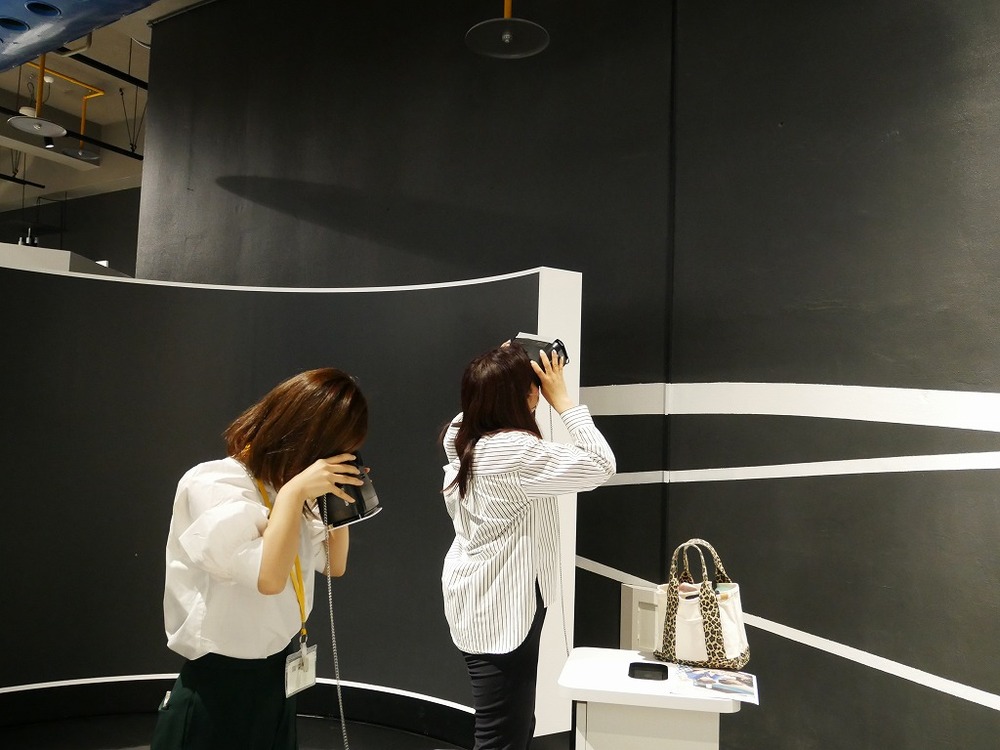
In the “Space Zone,” you can learn about the universe through games and quizzes.
“Super-Kamiokande” is a huge observation facility located in Gifu Prefecture.
Kamiokande VR allows you to see the inside of the building in VR. This is a popular display item, and is said to be even more fun if you check not only the top and bottom, but also the left and right sides.
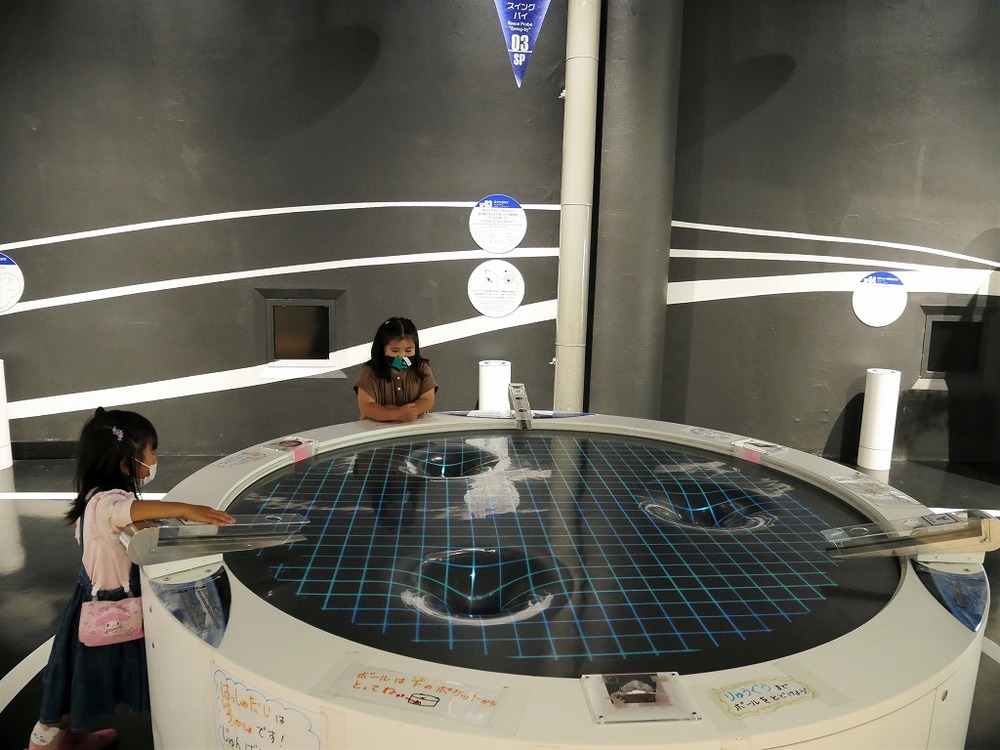
Swing-by is an image of how a spacecraft navigates. It’s easy to play, just shoot a white ball from the launch pad and put it into the pocket in the corner of the stage.
What appears on the stage is a hole that represents the gravity of a celestial body, so use the pulling force here to guide the ball to your pocket.
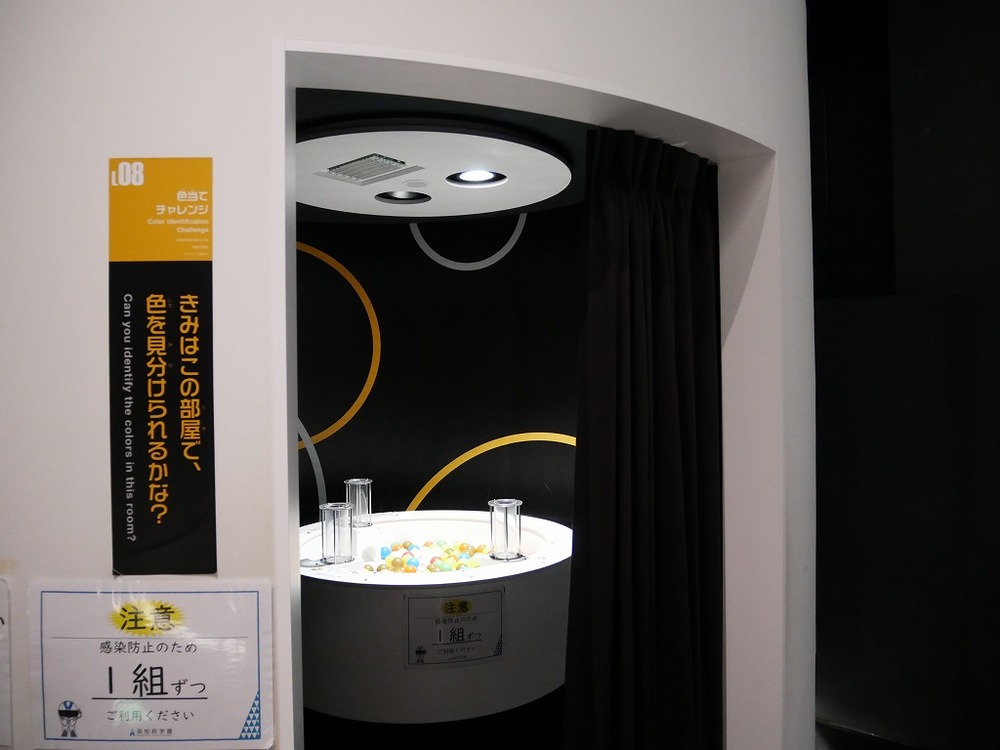
In the “Light Zone”, you can learn about familiar light technologies, such as how the eye works and the mysteries of vision, from many exhibits.
Experience the mechanics of animation with a zoetrope and enjoy a color guessing challenge. Some people aim for high scores in shooting games.
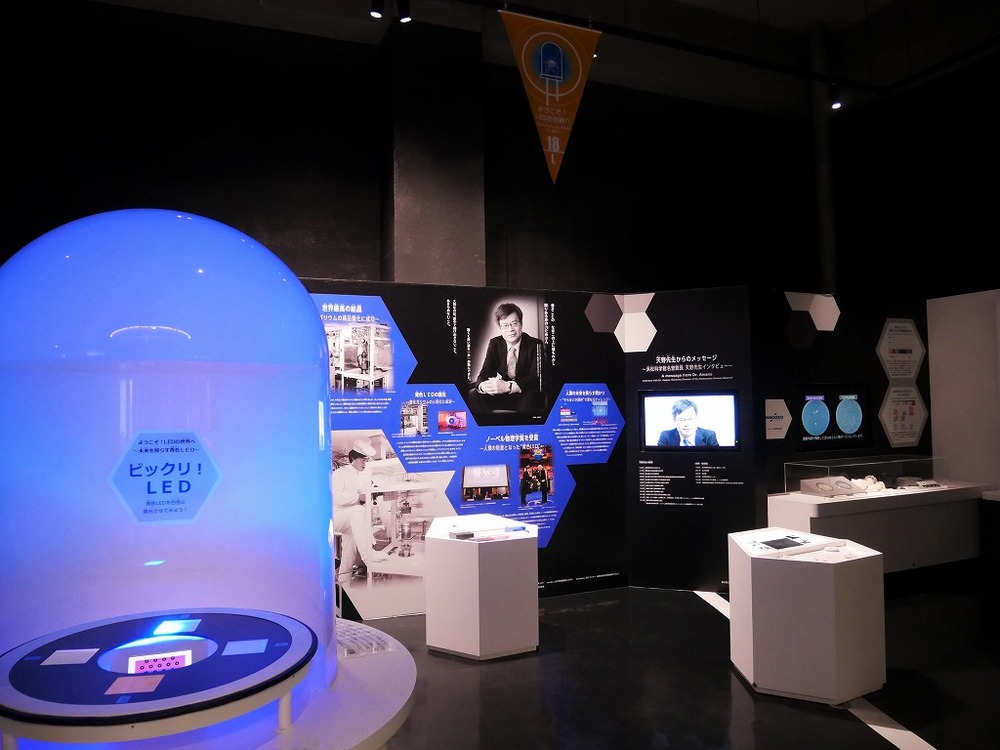
This corner introduces blue light emitting diodes (LEDs) from various angles in an easy-to-understand manner.
Some people may be wondering, “Blue LEDs in Hamamatsu?” In fact, Professor Amano, who succeeded in developing the world’s first blue LED and won the Nobel Prize in Physics in recognition of this achievement, was born in Hamamatsu.
With this development, the “three primary colors of light” were aligned, making it possible to create all kinds of colors.
You can actually make it emit light with your own hands, so give it a try.
I can't stop being excited! science show
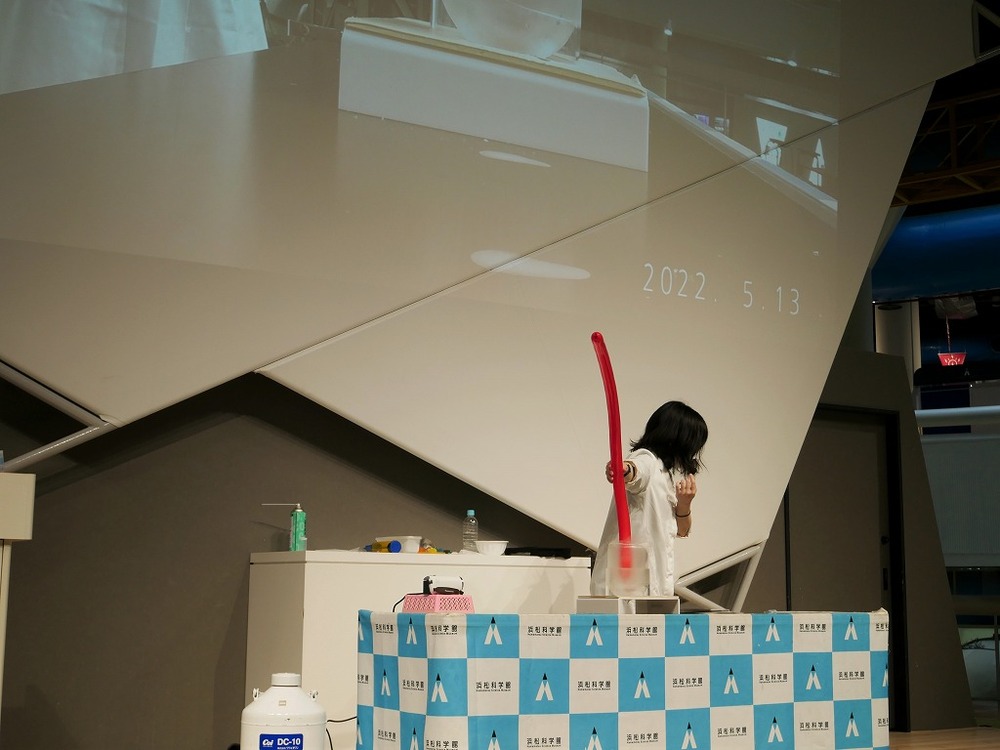
Science shows are held five times a day at the Miraira Stage on the M2F of the museum. There are about 10 types of experiments, including familiar ones that can be done at home and big tricks that can only be found at a science museum, and they change in the morning and afternoon.
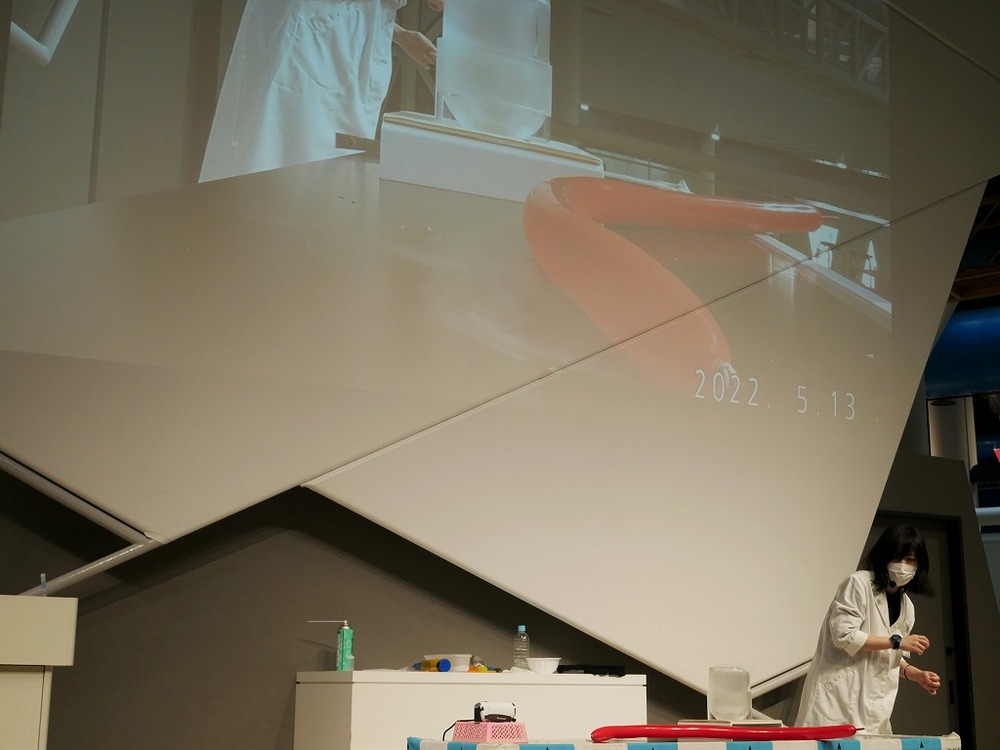
Just watching the science show makes me excited, wondering what the results will be. Your curiosity about science may never stop! ?

The show will be projected on a large screen in the center of the stage. Even if you can’t get a seat, it’s nice to be able to watch from the 2nd floor.
At the Miraira Table opposite the stage, there will be staff available to answer any questions you may have about science. It seems that some people consult about their concerns about independent research during summer vacation.
100 million stars in the renovated planetarium!
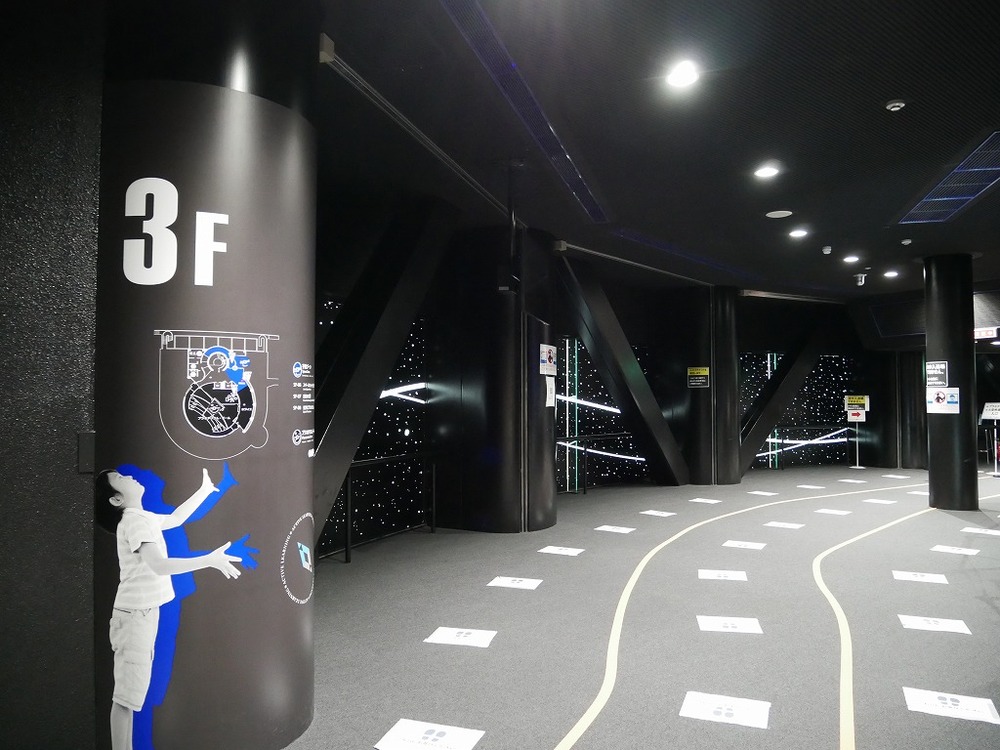
The planetarium on the 3rd floor will be renewed in March 2022! Aiming for an impressive starry sky, you can now see a starry sky that is 300 times more visible than with conventional projectors. The number of stars is approximately 100 million!
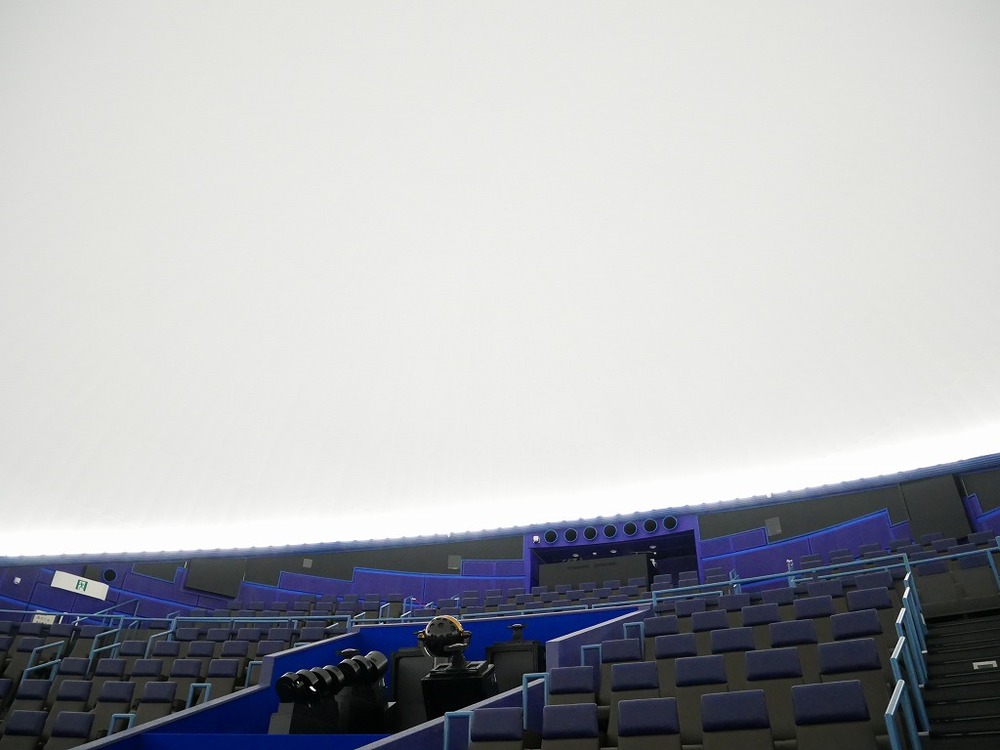
When displaying small but bright stars, conventional models made the stars larger to increase their brightness. The updated projector increases the amount of light so that small but bright stars shine even smaller.
Now you can enjoy a realistic starry sky.
The screenings include a large screen, a kids planetarium, and a planetarium with live explanations from the staff, which is popular.
All seats can be reclined. Be sure to check out the star-filled sky projected on the 20 meter large screen!
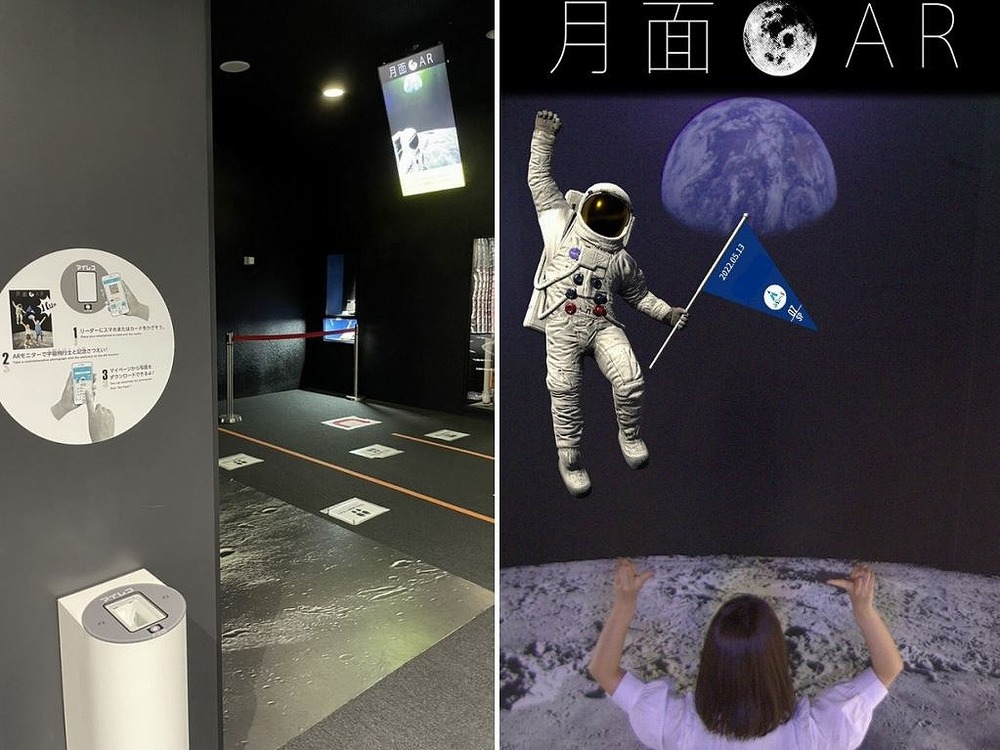
After viewing the planetarium, take a commemorative photo that will make you feel like you have traveled to space.
After downloading Hamamatsu Science Museum’s official app “Compass”, all you have to do is follow the instructions. The app has an AI dialogue system built into it, so it can also explain the exhibits.
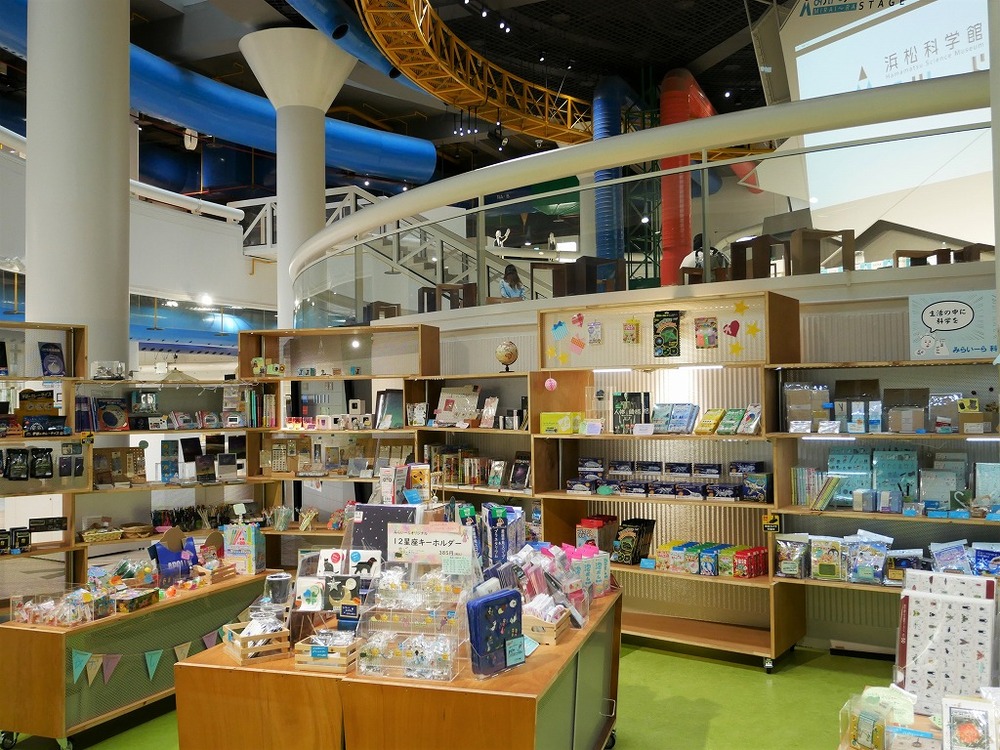
At the museum shop on the 1st floor, many original museum goods are also on sale. Enjoy your time even on rainy days in our fully air-conditioned facility.
Also featured on YouTube channel “Jenne Channel”▼
[Hamamatsu] The largest planetarium! Welcome to Hamamatsu Science Museum where you can see 100 million stars.
「https://www.youtube.com/watch?v=eTZoCNYnmmY」
Hamamatsu Science Museum official website (external link)
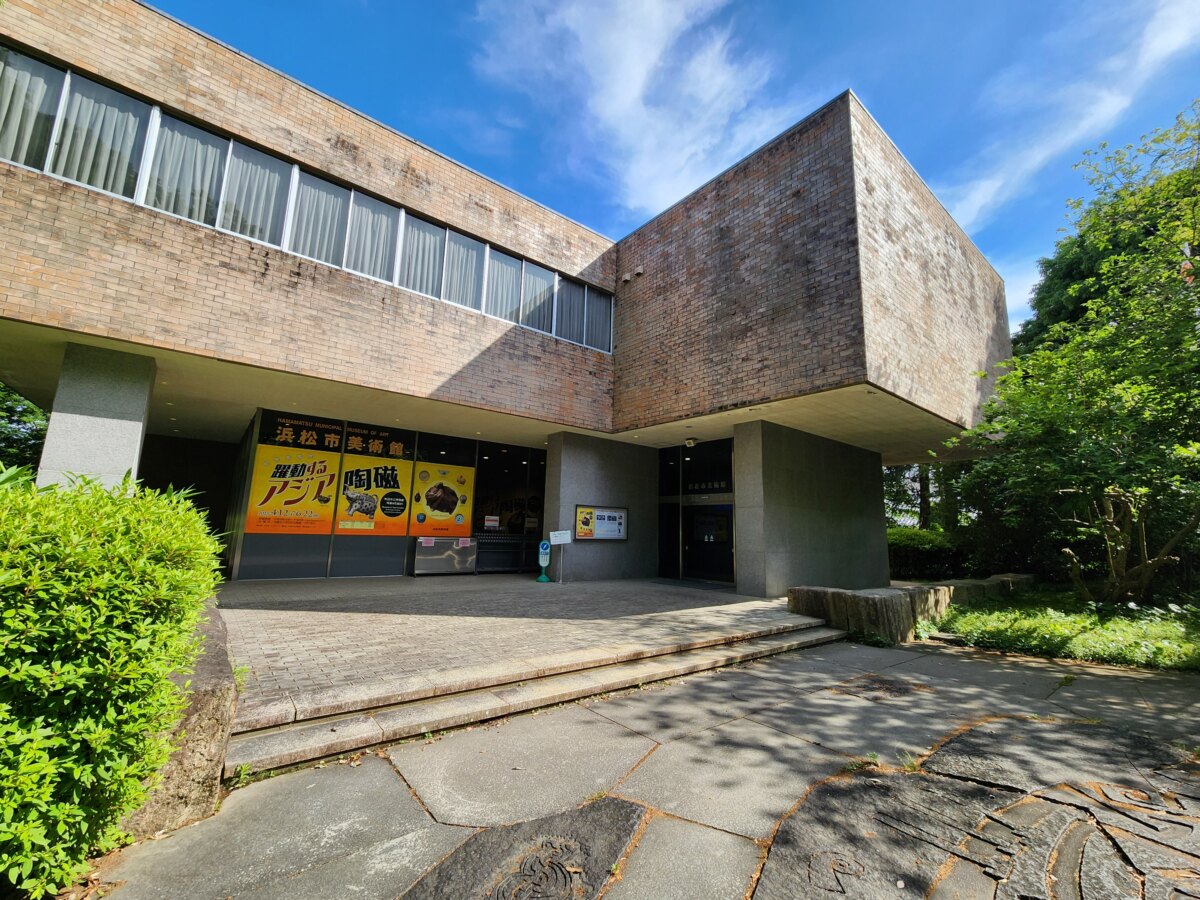
Hamamatsu City Museum of Art – Highlights, Admission, and Parking Info
